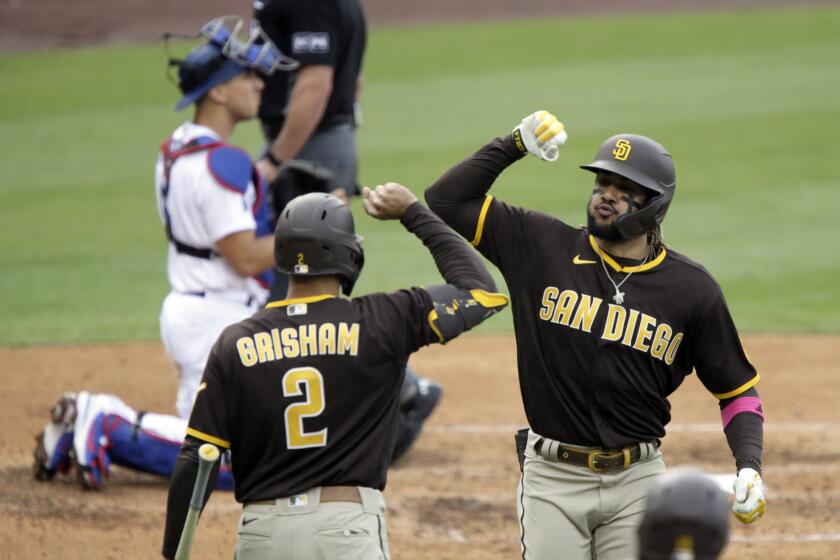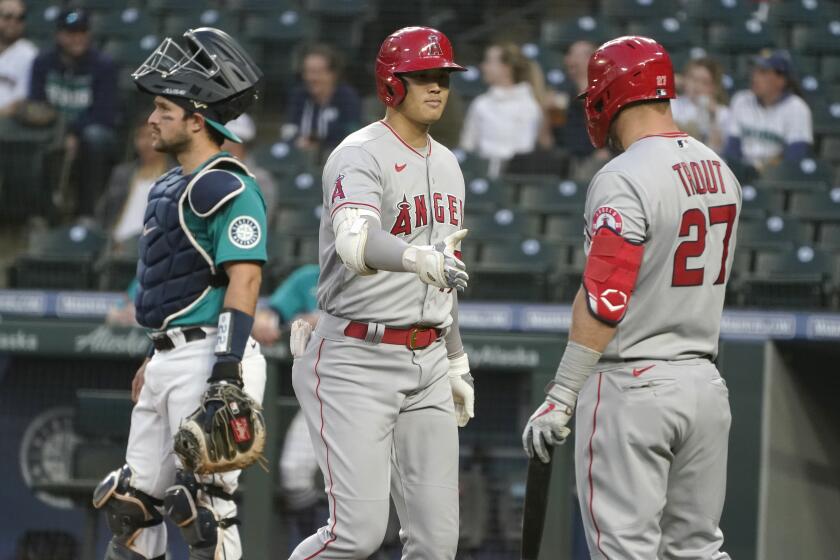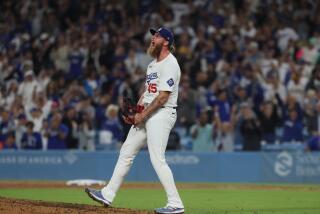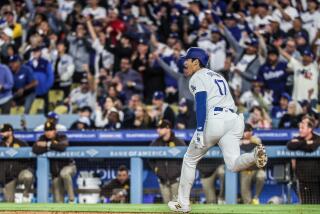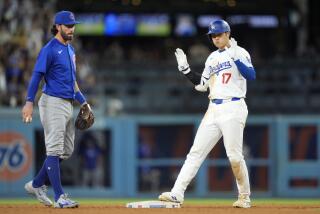Five observations about the Dodgers as they start the second half of the season
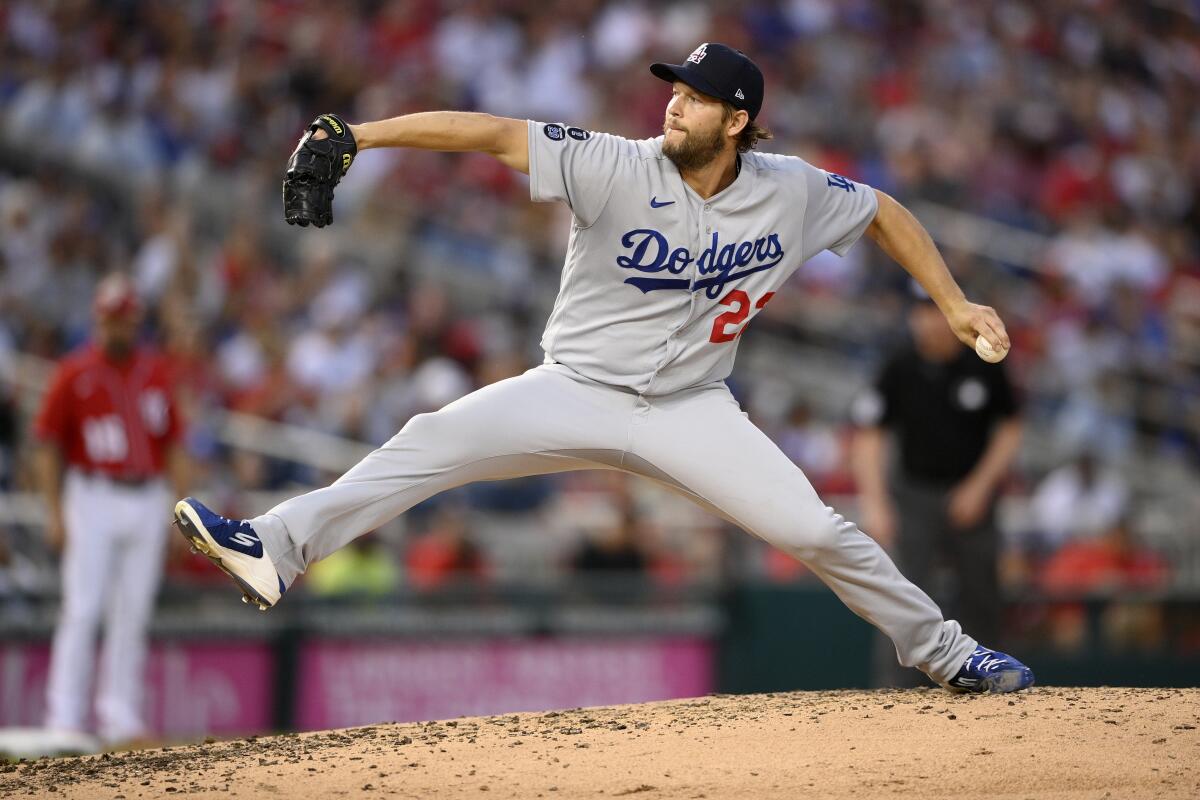
The Dodgers were almost never at full strength in their 91 games before the All-Star break. Injuries devastated the lineup, hindered their bullpen and, most recently, left unexpected uncertainty in the starting rotation.
Clayton Kershaw was placed on the injured list days before the time off and less than a week after Trevor Bauer was placed on paid administrative leave after a woman accused him of sexual assault and obtained a temporary restraining order against him. The leave was extended a second time Wednesday to July 27. Bauer may never pitch for the Dodgers again.
The Dodgers still reached the break with five All-Stars and the second-best record in the majors at 56-35. Their plus-142 run differential is tops in the major leagues. The problem is the only team with a better record — the San Francisco Giants — is sitting above them in the National League West.
The Dodgers begin the “second half” Friday against the Colorado Rockies two games behind the Giants (57-32). They have work to do to avoid a win-or-go-home wild-card game scenario with the San Diego Padres sitting behind them in third place. It’s an unfamiliar position for an organization vying for its ninth straight division title.
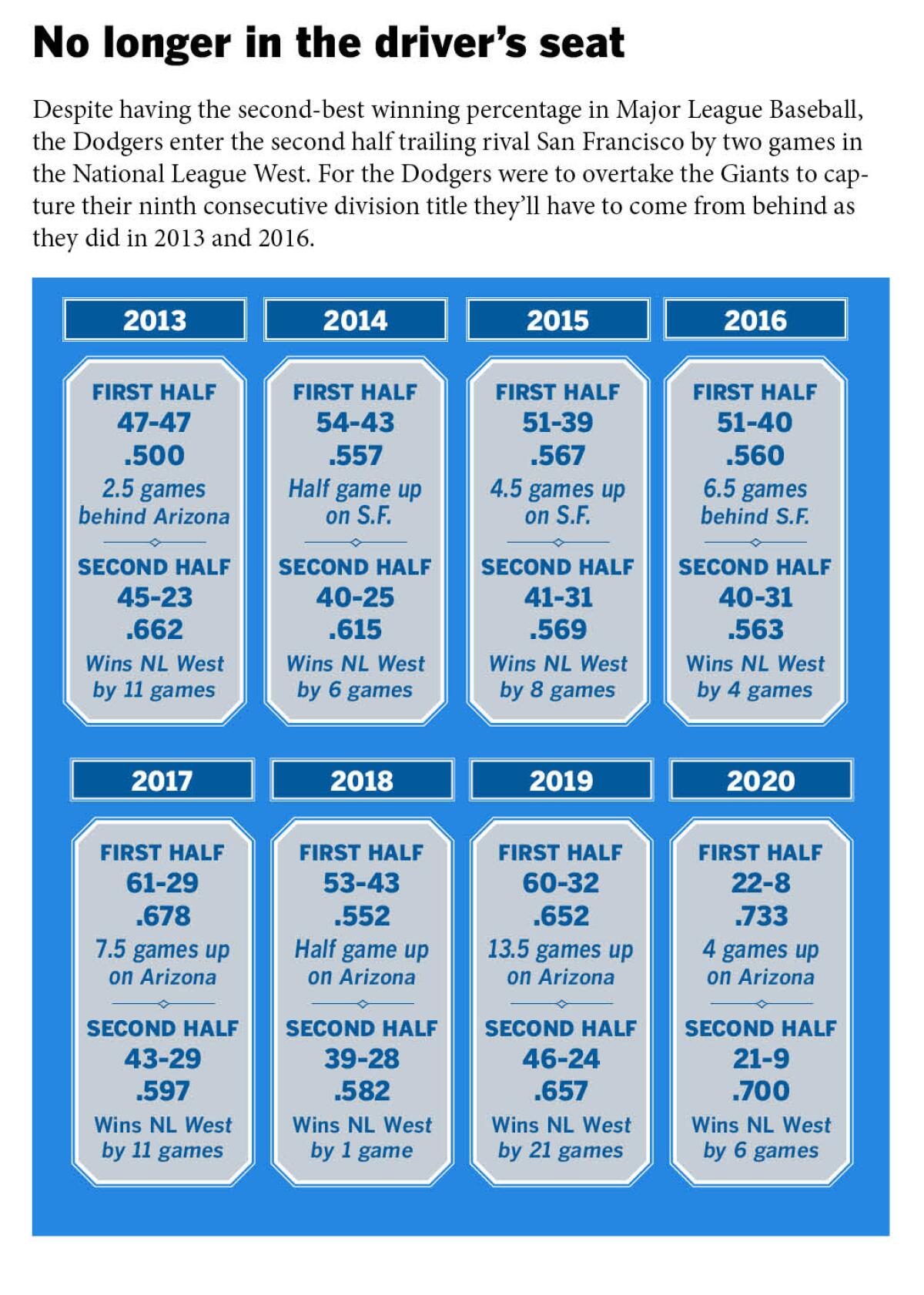
It’s starting to be an issue
Remember that unrivaled starting depth hyped at the start of the season? Bauer, Kershaw, Walker Buehler, Julio Urías and Dustin May resided in the rotation. Tony Gonsolin and David Price loomed for insurance.
The group was unparalleled. It was an undeniable strength. For three months, it fueled the Dodgers on most nights. Now it’s a giant question mark.
May is out of the season after undergoing Tommy John surgery in May. Bauer is out and Kershaw went on the IL with left forearm inflammation.
Dodgers manager Dave Roberts said an MRI exam on Kershaw’s arm showed just inflammation, but any forearm or elbow trouble is cause for concern. The left-hander’s timetable for a return is publicly unknown.
That leaves Buehler, Urías, Gonsolin and Price. The Dodgers were hesitant to move Price to the rotation from the bullpen, but they were forced to relent when Kershaw got hurt.
Who takes the fifth spot if Kershaw doesn’t return immediately after the break? Maybe nobody. The Dodgers could opt for bullpen games when needed if they think Kershaw’s activation is imminent.
Or they could call up Josiah Gray, one of the organization’s top pitching prospects, from triple-A Oklahoma City to log innings. Gray missed two months with a shoulder impingement before returning last week. The right-hander threw four scoreless innings Saturday.
What’s likely, whether Kershaw returns quickly or not, is the Dodgers trade for a starter before the July 30 deadline. Even if Kershaw is activated immediately and is 100%, Bauer’s future is uncertain, Gray might not be ready to start major league games and the Dodgers don’t have another viable option in triple-A.
The NL West might produce three playoff teams and the Yankees could be a .500 team. Here’s five observations about the first half.
The next internal choice is probably Ryan Pepiot. The right-hander has been dominant for double-A Tulsa, posting a 1.77 ERA in 45 2/3 innings across 11 outings. He recently logged seven no-hit innings. But jumping from double-A to the majors is quite the leap as a starter. He’s more likely to help as a reliever this season.
Acquiring an established starter is a real possibility. Several will be available. Some might not be at the moment. Their statuses could change over the next three weeks if their clubs aren’t in position to contend. The Dodgers will exhaust every option.
On and off offense
The Dodgers can score in bunches. They tallied 22 runs Saturday against the Arizona Diamondbacks and six in the final two innings of their walk-off win Sunday. They are second in the majors in runs scored.
Their bats also have a tendency to fall silent for stretches between outbursts. It’s been a pattern long enough to surmise it isn’t a coincidence. Ideally, they’d score more consistently.
Having Corey Seager in the lineup should supply a boost. Seager, out since fracturing his right hand May 15, is expected back by the end of the month. Better second halves from Cody Bellinger and Mookie Betts would also help.
Betts recently described his season as “bad.” Of course, he called his 2020 NL MVP runner-up as “serviceable” so the standards are lofty. While he certainly didn’t replicate his 2020 production in the first half, his peers still voted him into the All-Star game as a reserve. Betts chose not to go, citing nagging injuries.
The 28-year-old right fielder has dealt with shoulder, back and forearm ailments this season, but he’s downplayed their effect on his performance. Betts is batting .256 with 13 home runs and an .839 OPS in 79 games.
And yet he has a 131 OPS+ — 100 is average — after posting a 149 OPS+ last year, suggesting the offensive drop-off isn’t as significant in relation to his peers around the majors. He also finished the first half strong with five hits, including two home runs, in the final two games. He’s trending up.
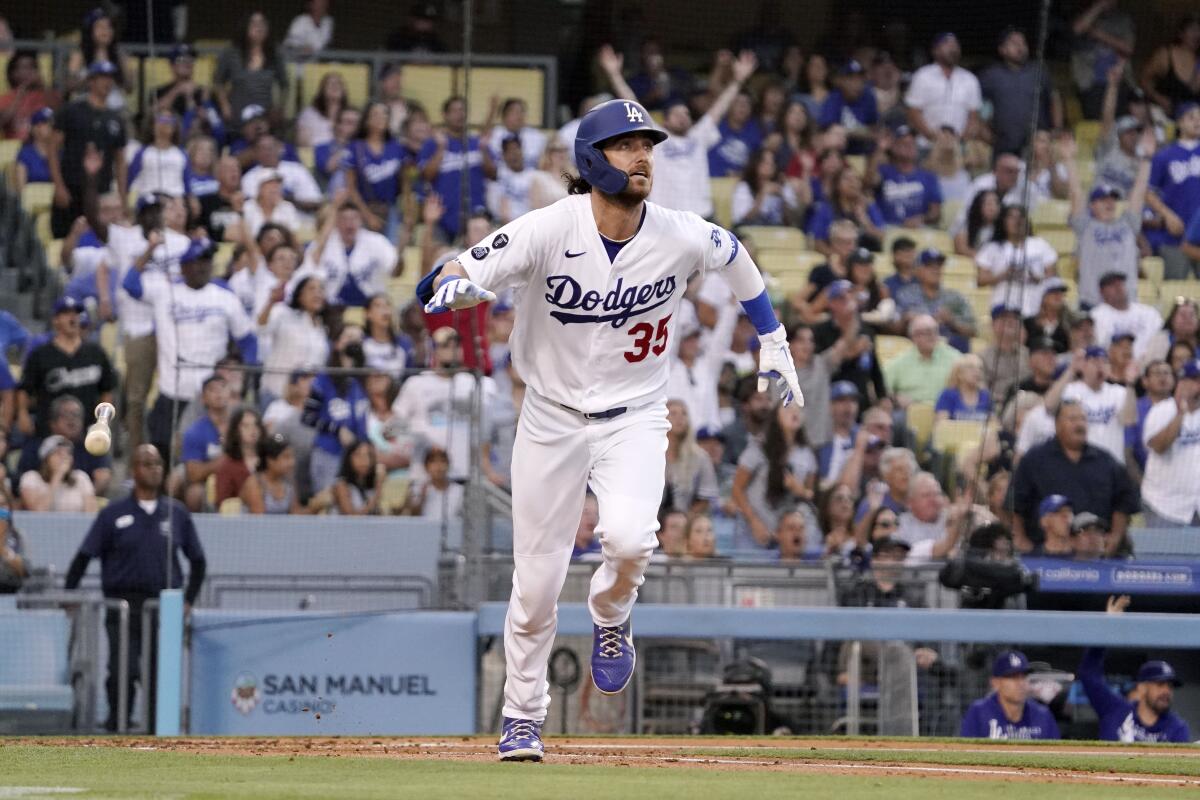
Bellinger doesn’t fall in that category. He missed most of the first half with a fractured fibula after offseason shoulder surgery delayed his participation in spring training. When he was available, he struggled. The center fielder is batting .176 with four home runs and a .593 OPS in 34 games.
The stop-and-go nature of his season hasn’t helped, but Bellinger hasn’t been an elite hitter in nearly two years. Since August 2019, he’s batting .230 with 29 home runs, 78 walks, 118 strikeouts and a .784 OPS in 592 plate appearances over 141 games. His elite defense still makes him a valuable piece, but he hasn’t been an elite offensive player since the torrid start to his 2019 NL MVP season. The Dodgers don’t need that version of Bellinger, but something closer would lengthen an already explosive lineup.
Will Jansen keep it up?
History, data, eyeballs, everything suggested that Kenley Jansen’s days as an elite reliever were over. He regressed each of the last three seasons after an all-world 2017. His signature cutter wasn’t overwhelming hitters anymore. The expectation was Jansen would be a liability — perhaps even replaced as closer — in the final year of his contract.
But Jansen has emphatically reversed course in his age-33 season. He’s given up eight runs — five earned — in 36 1/3 innings, good for a 1.24 ERA. He has 21 saves in 23 chances. His 5.4 walks per nine innings are a career-high, but he’s yielding a career-low 3.7 hits per nine. One could argue he should’ve made the All-Star team. He definitely thinks so.
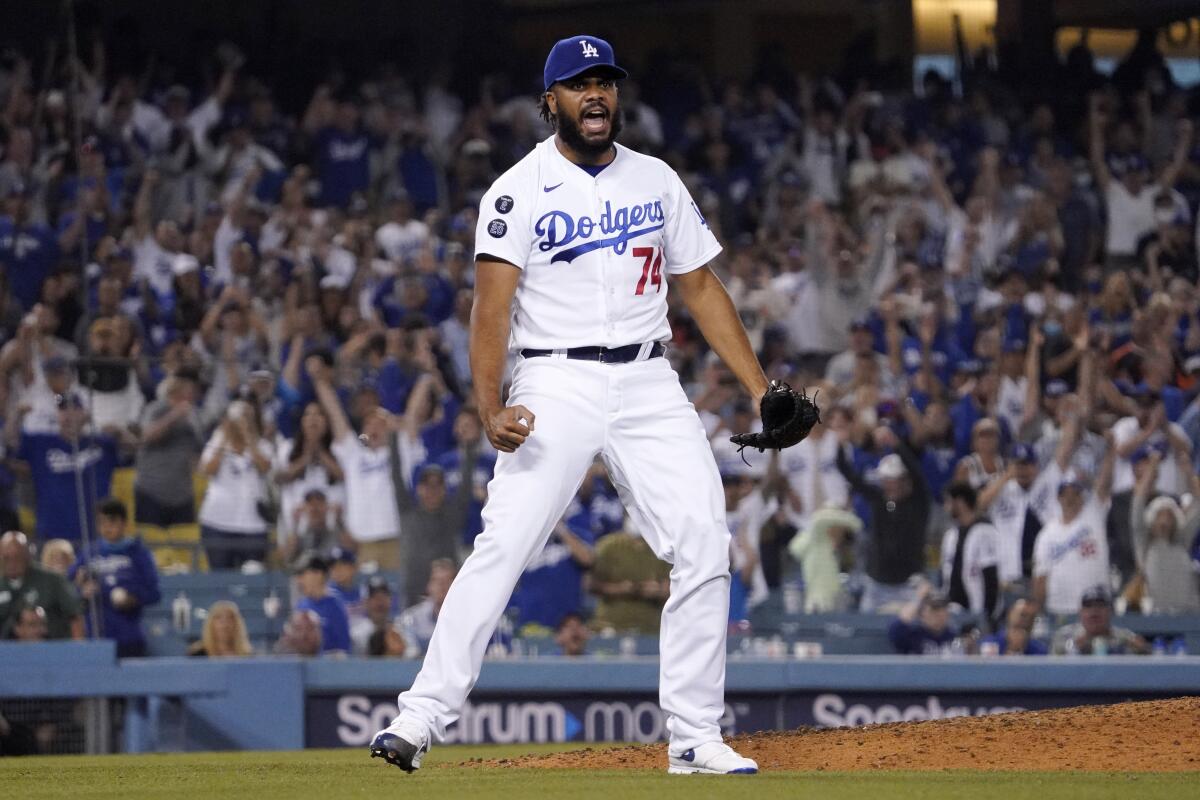
The question now becomes can he sustain this form? Can he remain a reliable closer down the stretch and into the postseason? Or will he be effectively replaced when it matters most as he was the last two years? The Dodgers stuck by Jansen thus far and it has paid off. Whether they stick by him in October remains to be seen.
Teams can apply pressure
The bad news for the Dodgers is that the Padres unearthed a formula to rattle them: Apply pressure on the basepaths whenever possible. Several Dodgers pitchers have trouble holding on runners — a weakness exacerbated by the lack of elite arms behind the plate. The good news for the Dodgers is there aren’t many — if any — teams in the majors that can match the Padres’ athleticism.
That doesn’t mean other teams haven’t tried. The Miami Marlins opted for the strategy with success. It produced a walk-off win this month on a wild pitch and Will Smith’s throwing error. In April, the Cincinnati Reds traveled to Los Angeles with two steals in 21 games. They doubled the total the first night and added another in the third game of the series. They’ve totaled 19 in 66 games since.
Six Dodgers pitchers have allowed at least six steals this season. Bauer, who might not pitch again this year, leads the group with 12. Opponents are 73 for 96 in steal attempts against the Dodgers this season. Both lead the majors. It’s a problem — occasionally sloppy infield defense is another — the Dodgers know they must correct.
The Angels need improved health and defense, and a lot of wins, to make a playoff push in the second half of the season.
Still in position
Roberts described his club’s first half as “holding serve” without its full ensemble.
The Dodgers have had Bellinger, Max Muncy, AJ Pollock, Gavin Lux, Zach McKinstry, Price, Joe Kelly, Gonsolin, and Scott Alexander on the injured list this season. Seager, Kershaw, Jimmy Nelson, Corey Knebel, and Victor González are currently on the injured list. Edwin Ríos and May are lost for the season.
Sitting two games from the best record in the major leagues with 71 remaining despite the setbacks is cause for optimism. Questions remain — none bigger than the starting rotation — but the Dodgers are still among the favorites to win the World Series, just as expected.
“We held serve and now it’s our service,” Roberts said. “We have to take advantage of it. I think this is when the really good clubs start to ascend. And I think we have a really good club.”
More to Read
Are you a true-blue fan?
Get our Dodgers Dugout newsletter for insights, news and much more.
You may occasionally receive promotional content from the Los Angeles Times.

